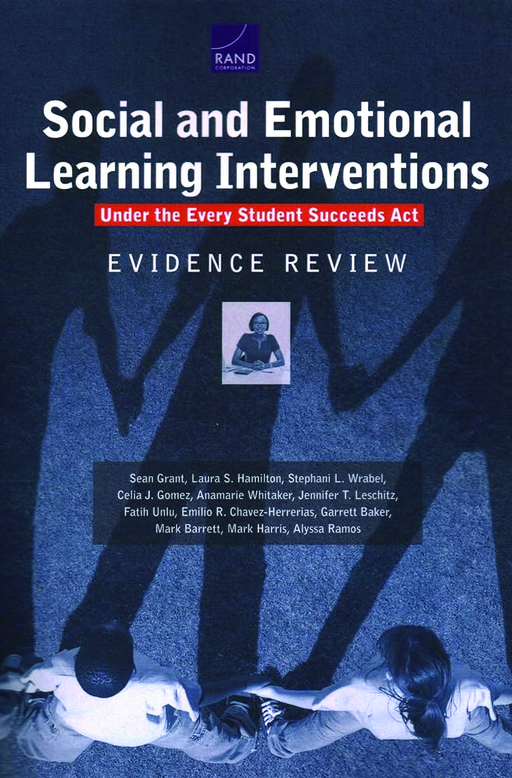Breadcrumb
- Wallace
- Reports
- Social And Emotional Learning In...
Social and Emotional Learning Interventions Under the Every Student Succeeds Act
Evidence Review

Summary
How we did this
RAND researchers examined recent peer-reviewed research literature to identify evidence on SEL interventions meeting ESSA’s requirements. They sought to answer: 1) What SEL interventions have recently been evaluated in U.S.- based, K–12 public schools? 2) What SEL interventions have yielded evidence meeting ESSA Tiers I–III?
To succeed in school and life, children must develop skills to manage emotions, cultivate positive relationships, and navigate social situations. The phrase “social and emotional learning” (SEL) describes these skills. U.S. schools increasingly help K-12 students develop these skills.
The Every Student Succeeds Act of 2015 (ESSA) is the federal law that governs U.S. K-12 education policy. Educators can use funding offered under ESSA to support evidence-based SEL programming.
In this evidence review, RAND researchers address how ESSA supports SEL. They outline the different levels of evidence that ESSA requires, from Strong (Tier I) to Promising (Tier III). And they identify 60 evidence-based interventions or approaches that meet those requirements.

A growing body of research suggests that, to be successful, students not only need to master core academic subjects...but also need to demonstrate competency in a wide variety of cognitive, affective, and behavioral domains.
RAND researchers identify three possible funding streams that support SEL programming. Educators should understand these streams to take full advantage of them. Title I focuses on improving the educational achievement of disadvantaged students. Title II focuses on preparing and training high quality teachers, principals, or other school leaders. And Title IV, 21st Century Schools, supports a variety of programs to improve the educational opportunities of disadvantaged students.
They identify 60 evidence-based SEL interventions that meet Tier I-III evidence requirements. Interventions with positive results include those focused on peer interactions, community involvement, school culture, and academic achievement, among others. Interventions addressing interpersonal competencies – the skills needed to relate to other people, such as communication, collaboration, conflict resolution, and leadership – have the most common positive outcomes. The majority of all evidence-based interventions are proven at the elementary school level and in urban communities. There is also evidence of their success in other settings.
The authors offer guidance for implementing Tier IV interventions. This evidence tier gives educators flexibility to use approaches that lack research but meet local needs. Tier IV interventions must be supported by a strong rationale for how they will improve targeted outcomes. These approaches must also be under evaluation, to expand the SEL evidence and program base going forward.
The researchers conclude the evidence review with recommendations. These include taking advantage of Tier IV flexibility for interventions with no empirical research, and providing professional development opportunities to build educators’ capacity to gather and use evidence.
Key Takeaways
- ESSA supports social and emotional learning through at least three different funding streams
- RAND researchers identified 60 different SEL interventions that meet ESSA Tier I to III evidence requirements
- Educators in elementary schools and urban communities have the most options for evidence-based SEL interventions
- SEL interventions addressing the skills needed to relate to other people, such as communication, collaboration, conflict resolution, and leadership, have the largest positive evidence base. ESSA refers to these as interpersonal competencies
Materials & Downloads
What We Don't Know
- How similar do settings and sample sizes of proven interventions need to be to schools that seek to use them with ESSA funding?
- What role should proven effect size and outcomes play in how educators prioritize which interventions to seek funding for?


